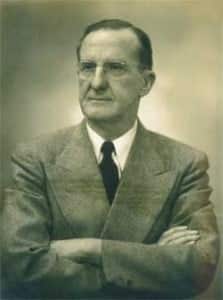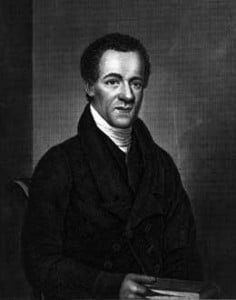A Review of a Book on the Scottish Covenanters
by Rev. David T. Myers
You take notice of a book when, on the covers are favorable reviews of the book by James Boice, D. James Kennedy, Morton Smith and J. Ligon Duncan. Even though two of the above Presbyterian ministers are now members of the triumphant church while two are still in the militant church on earth, their joint commendations should prompt each of our readers to buy and read this 432 page book. Written by a PCA ruling elder of Grace Presbyterian Church, Aiken, South Carolina, Edwin Nisbet Moore, it asks the soul searching question, “How much are you prepared to go through for the sake of the truth?”
In essence, Edwin Moore traces the religious heritage of his Scottish ancestor, John Nisbet and one John Nevay, who believed and lived in the late seventeenth century during the “Killing times” of the Covenanters in the land of Scotland. Episcopalian or Anglican clergy had replaced the faithful Presbyterian pastors in the land, sending their under shepherds away to the fields and mountains of the country to minister in difficult circumstances the truths of the Reformation in Scotland. When John Nisbet refused to baptize his child in the Anglican faith, all his worldly wealth was lost, his wife and daughter died, and ultimately he suffered execution for the faith of the Covenanters.
And yet what is remarkable about this book written in the year 2000, is not just the history of the life and times of these Scottish Presbyterian pastors and people who chose to preserve their God-given faith in difficult times. It is also the continuing challenge of living for Christ faithfully as we face increasing spiritual and physical difficulties as Christians, and Reformed Christians in our beloved land of America.
So for us today, author Moore spends the last half of the book of 190 pages in drawing lessons from the Covenanters. The six lessons which he amplifies, follows:
-
All true Christians can be called Covenanters, for the central theme of the Bible is God’s Covenant of grace.
-
The church must re-establish unity in truth as attained during the Second Reformation and the apostolic era.
-
Christians must put their covenant obligations and duty to be God’s people first. This requires closing with Christ and improving the relationship daily.
-
Christians must fulfill their biblical obligations to make disciples of all nations and to be the light and salt of the world.
-
Christians must covenant with God and should covenant with one another to seek reformation of their lives, churches, and society in accordance with the Word of God.
This author believes that this book on “Our Covenant Heritage” would make an excellent group study for our Presbyterian Sessions, to say nothing of the members of our Presbyterian churches in church or home Bible studies.
After all, the haunting question remains, “How much are you prepared to go through for the sake of truth?”. And, we can add, how much is your church willing to go through for the sake of truth?
The book is entitled Our Covenant Heritage, written by Edwin Nisbet Moore, and published by Christian Focus Publications Ltd, Ross-shire, Scotland, published in the year 2000.



 The nation’s first Presbyterian church, organized specifically for African Americans, was located in Philadelphia and it was organized in 1807. But it was on this day, January 13th, in 1822, that what was sometimes labled the First Colored Presbyterian Church of New York City, or officially the New Demeter Street Presbyterian Church, was organized, with an initial congregation of twenty four members. The Rev. Samuel E. Cornish served as the organizing pastor, though despite his earnest efforts, the congregation’s early years were fraught with setbacks. First they lost their building, that had been built at a cost of $14,000, and then they lost their pastor in 1828, due to his declining health.
The nation’s first Presbyterian church, organized specifically for African Americans, was located in Philadelphia and it was organized in 1807. But it was on this day, January 13th, in 1822, that what was sometimes labled the First Colored Presbyterian Church of New York City, or officially the New Demeter Street Presbyterian Church, was organized, with an initial congregation of twenty four members. The Rev. Samuel E. Cornish served as the organizing pastor, though despite his earnest efforts, the congregation’s early years were fraught with setbacks. First they lost their building, that had been built at a cost of $14,000, and then they lost their pastor in 1828, due to his declining health. The next man called by the congregation in 1829 was the Rev. Theodore S. Wright (pictured at right), trained in part at Princeton Seminary and licensed to preach by the Presbytery of Albany. Under his leadership the congregation was able to obtain the former German Lutheran church at Frankfort and William Streets and from that time forward, until Rev. Wright’s death in 1847, the congregation prospered.
The next man called by the congregation in 1829 was the Rev. Theodore S. Wright (pictured at right), trained in part at Princeton Seminary and licensed to preach by the Presbytery of Albany. Under his leadership the congregation was able to obtain the former German Lutheran church at Frankfort and William Streets and from that time forward, until Rev. Wright’s death in 1847, the congregation prospered.![Ashbel Green [1762-1848]](https://thisday.pcahistory.org/wp-content/uploads/2013/07/Dr.-Ashbel-Green-217x300.jpg) In the Life of Ashbel Green, available on-line, we have a summary of the means of a biblical revival which took place at the College of New Jersey, of which Ashbel Green was its president. Prior to this revival, only twelve students out of one hundred and five were counted as professors of the Christian faith in the college. The report to the trustees of the college is too long to be reproduced here, but a succinct summary can be given to the divine means used, which means are remarkably up-to-date for professing Christians in our day and age. They are:
In the Life of Ashbel Green, available on-line, we have a summary of the means of a biblical revival which took place at the College of New Jersey, of which Ashbel Green was its president. Prior to this revival, only twelve students out of one hundred and five were counted as professors of the Christian faith in the college. The report to the trustees of the college is too long to be reproduced here, but a succinct summary can be given to the divine means used, which means are remarkably up-to-date for professing Christians in our day and age. They are: